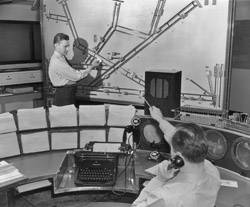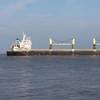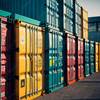Virtually everyone is, by now, familiar with the concept of electronic navigation, also called eNavigation or eNav. The problem is that the term means different things to different people. Historically, it started with radio beacons. Radar, loran, and GPS have been added over time. Now we have AIS and electronic charting. Most mariners view this as an increasingly sophisticated set of tools installed on the ship to improve the ability to avoid collisions, groundings, and related casualties. That is only part of the story.
The International Maritime Organization (IMO), the International Association of Marine Aids to Navigation and Lighthouse Authorities (IALA), and various flag administrations take a broader view of the role of eNav. They define eNav as “the harmonized collection, integration, exchange, presentation, and analysis of marine information onboard and ashore by electronic means to enhance berth to berth navigation and related services for safety and security at sea and protection of the marine environment.” The shoreside aspect greatly increases the complexity of the eNav system. The goal is not only to make the various eNav tools interoperable on a ship (a task that has largely been accomplished), but to integrate those shipboard systems with counterparts ashore. It is the design, construction, and operation of those shoreside components, along with the interconnectivity with ships, that lead to the need for an overarching eNav strategy.
Development of an eNav strategy commenced in December 2005 with the submittal to the IMO’s Maritime Safety Committee (MSC) of a formal proposal by Japan, the Marshall Islands, the Netherlands, Norway, Singapore, the United Kingdom, and the United States for development of an E-Navigation Strategy. As stated in their joint submittal: “The aim should be to develop a strategic vision for the utilization of existing and new navigational tools, in particular electronic tools, in a holistic and systematic manner.”
The authors of the proposal acknowledged that its scope was broad. At the same time they expressed a belief that it was timely and appropriate for the IMO to develop a strategic vision for incorporating the use of new technologies in a structured way and ensuring that their use was compliant with the various electronic navigational and communication technologies and services that are already available. The aim of their proposal was to develop an overarching accurate, secure, and cost-effective system with the potential to provide global coverage for vessels of all sizes. The submittal recognized that implementation of this new strategic vision might require modification of working methods and navigational tools, such as charts, bridge display equipment, electronic aids to navigation, communications, and shore infrastructure. Following discussion of the proposal, the MSC decided in May 2006 to include in the work programs of the Safety of Navigation (NAV) and Radiocommunications and Search and Rescue (COMSAR) Sub-Committees a high priority item on development of an eNav strategy, with a target completion date of 2008. The Sub-Committee on Standards of Training and Watchkeeping (STW) was later brought into the project. The MSC noted that the basic technology for such an innovative step is already available. The challenge lies in ensuring the availability of the various components and using that availability effectively in order to simplify, to the benefit of the mariner, the display of the occasional local navigational environment.
Development of an eNav strategy was identified by Secretary-General Efthimios Mitropoulos in 2007 as one of the IMO’s highest priorities. The eNav strategy was officially approved at the eighty-fifth session of the Maritime Safety Committee (MSC 85) on December 19, 2008. It is sweeping in its scope and potentially far-reaching in its implications. The strategy envisions navigation systems on the ship that benefit from the integration of own ship sensors, supporting information (largely from shoreside sources), a standard user interface, and a comprehensive system for managing guard zones and alerts. Core elements of the system would actively engage the mariner in the process of navigation to carry out those duties in an efficient manner while preventing distraction and overburdening. Based on my limited experience, this idyllic goal is more easily defined than attained. Meanwhile, the management of vessel traffic and related services ashore would be enhanced through better provision, coordination, and exchange of comprehensive data in formats that will be more easily understood and utilized by the shore-based operators in support of vessel safety and efficiency. As with the shipborne component, I see this as technically feasible but unlikely. I can just imagine a VTM center watchstander in New York, Rotterdam, or Shanghai trying to anticipate a collision or grounding and issuing a warning (or order) to the deck watch officer on the ship (or two ships) while being flooded with and having to evaluate a multitude of detailed information from every ship within range.
This end-state eNav system would be supported by an infrastructure providing authorized seamless information transfer on board ship, between ships, between ship and shore, and between shore authorities and other parties with many related (but vaguely defined) benefits. Potentially massive amounts of information (such as tides, currents, water heights, wind, weather, status of aids to navigation, marine traffic conditions, etc.) from shoreside sources would be collected, collated, and made available to ships. At the same time, large amounts of information about the situation on the ship would be collected and transmitted to authorities ashore on a real-time basis.
To me personally, the most revolutionary provision in the eNav strategy document is the following:In human reliability analysis terms, the presence of someone checking the decision-making process improves reliability by a factor of 10. If e-navigation could assist in improving this aspect, both by well-designed onboard systems and
[by] closer cooperation with vessel traffic management (VTM) instruments and systems, risk of collisions and groundings and their inherent liabilities could be dramatically reduced. This clearly presages a move toward the traffic control system utilized in the aviation sector. I have two divergent views on this development, which are impossible to reconcile. First, I accept that a large percentage of marine casualties are caused solely or primarily by human error and/or poor judgment. One only needs to recall the Titanic or the Exxon Valdez for pertinent examples. Secondly, I am not convinced that people sitting in a darkened room ashore can do a significantly better job that a trained deck watch officer on the bridge. While someone in a VTM center might have counseled the master of the Titanic to reduce speed, it is unlikely that such a center would have been monitoring the ship in mid-ocean. With regard to the Exxon Valdez, the grounding occurred in part because the helmsman did not realize that the ship was operating on auto-pilot. It only took a few minutes to realize the error, but by then the die had been cast. It is possible that someone in a VTM center might have caught the mistake before the deck watch officer did, but doubtful.
The eNav strategy envisions a significantly expanded data exchange system between ship and shore that would allow shoreside authorities to remotely determine such things as the make and model of the ECDIS, GPS, and radar systems on the ship and whether their operating systems are up to date. The shipboard navigation system could be closely coupled with that of the VTM center to allow for increased shoreside supervision of vessel navigation in congested waters.
Shoreside authorities might eventually have the capability to remotely alter a ship’s AIS voyage details if those details are determined to be out of date or erroneous. All of these capabilities are being undertaken with little awareness by or input from the average mariner. Please do not get me wrong. I strongly support technological improvement. For example, I think that the ECDIS should automatically input the ship’s current draft as updated by hull sensors (plus a cushion of about 10%) and establish “no-go” areas where audible warnings would activate on the bridge and in the master’s cabin if anyone tries to lay a course through or the vessel wanders into such an area. The same could be done with air draft. Weather, tides, currents, and water heights should be automatically downloaded and made available at the touch of a button. Google Maps have “street views” of roadways, showing what a driver should expect to see if traveling that particular road. Why can’t mariners be provided the same thing from a waterway perspective, with significant landmarks labeled? There are numerous ways that technology can be harnessed to make life easier for the overworked mariner. I’m just not sure that those charged with developing the eNav strategy focused on these possibilities.I am strongly in favor of providing mariners with all the information needed to perform their important duties. There are three caveats though. The information must be provided in a user-friendly manner. More importantly, the changes must be implemented in a manner that reduces, rather than increases, the workload of the mariner. Finally, any changes should be undertaken with due respect for the professionalism of the mariner.
(As published in the December 2011 edition of Maritime Reporter & Engineering News - www.marinelink.com)













